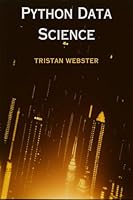
Alan Turing’s Electronic Brain
- Length: 592 pages
- Edition: Reprint
- Language: English
- Publisher: Oxford University Press, USA
- Publication Date: 2012-07-05
- ISBN-10: 0199609152
- ISBN-13: 9780199609154
- Sales Rank: #2241446 (See Top 100 Books)
Alan Turing’s Electronic Brain: The Struggle to Build the ACE, the World’s Fastest Computer
The mathematical genius Alan Turing, now well known for his crucial wartime role in breaking the ENIGMA code, was the first to conceive of the fundamental principle of the modern computer-the idea of controlling a computing machine’s operations by means of a program of coded instructions, stored in the machine’s ‘memory’. In 1945 Turing drew up his revolutionary design for an electronic computing machine-his Automatic Computing Engine (‘ACE’). A pilot model of the ACE ran its first program in 1950 and the production version, the ‘DEUCE’, went on to become a cornerstone of the fledgling British computer industry. The first ‘personal’ computer was based on Turing’s ACE.
Alan Turing’s Automatic Computing Engine describes Turing’s struggle to build the modern computer. The first detailed history of Turing’s contributions to computer science, this text is essential reading for anyone interested in the history of the computer and the history of mathematics. It contains first hand accounts by Turing and by the pioneers of computing who worked with him. As well as relating the story of the invention of the computer, the book clearly describes the hardware and software of the ACE-including the very first computer programs. The book is intended to be accessible to everyone with an interest in computing, and contains numerous diagrams and illustrations as well as original photographs.
The book contains chapters describing Turing’s path-breaking research in the fields of Artificial Intelligence (AI) and Artificial Life (A-Life). The book has an extensive system of hyperlinks to The Turing Archive for the History of Computing, an on-line library of digital facsimiles of typewritten documents by Turing and the other scientists who pioneered the electronic computer.
Table of Contents
Part I: The National Physical Laboratory and the ACE Project
Chapter 1. The National Physical Laboratory
Chapter 2. The creation of the NPL Mathematics Division
Chapter 3. The origins and development of the ACE project
Chapter 4. The Pilot ACE at the National Physical Laboratory
Part II: Turing and the History of Computing
Chapter 5. Turing and the computer
Chapter 6. The ACE and the shaping of British computing
Chapter 7. From Turing machine to ‘electronic brain’
Chapter 8. Computer architecture and the ACE computers
Part III: The ACE Computers
Chapter 9. The Pilot ACE instruction format
Chapter 10. Programming the Pilot ACE
Chapter 11. The Pilot ACE: from concept to reality
Chapter 12. Applications of the Pilot ACE and the DEUCE
Chapter 13. The ACE Test Assembly, the Pilot ACE, the Big ACE, and the Bendix G15
Chapter 14. The DEUCE—a user’s view
Chapter 15. The ACE Simulator and the Cybernetic Model
Chapter 16. The Pilot Model and the Big ACE on the web
Part IV: Electronics
Chapter 17. How valves work
Chapter 18. Recollections of early vacuum tube circuits
Chapter 19. Circuit design of the Pilot ACE and the Big ACE
Part V: Technical Reports and Lectures on the ACE 1945–47
Chapter 20. Proposed electronic calculator (1945)
Chapter 21. Notes on memory (1945)
Chapter 22. The Turing–Wilkinson lecture series (1946–7)
Chapter 23. The state of the art in electronic digital computing in Britain and the United States (1947)







